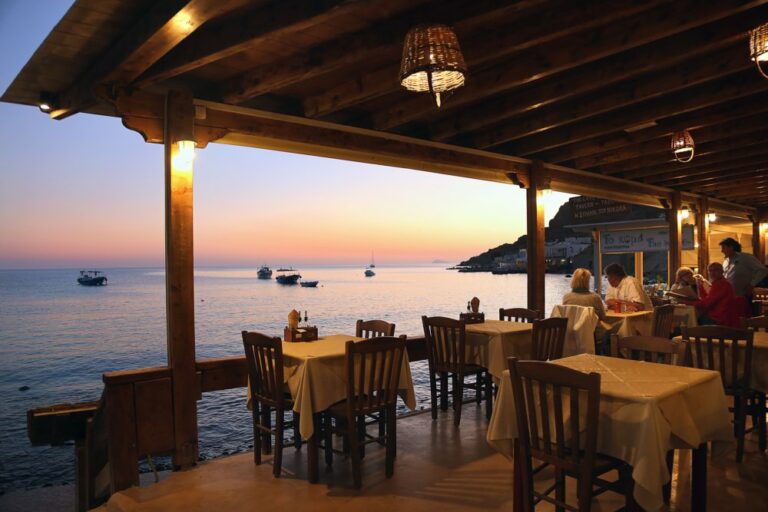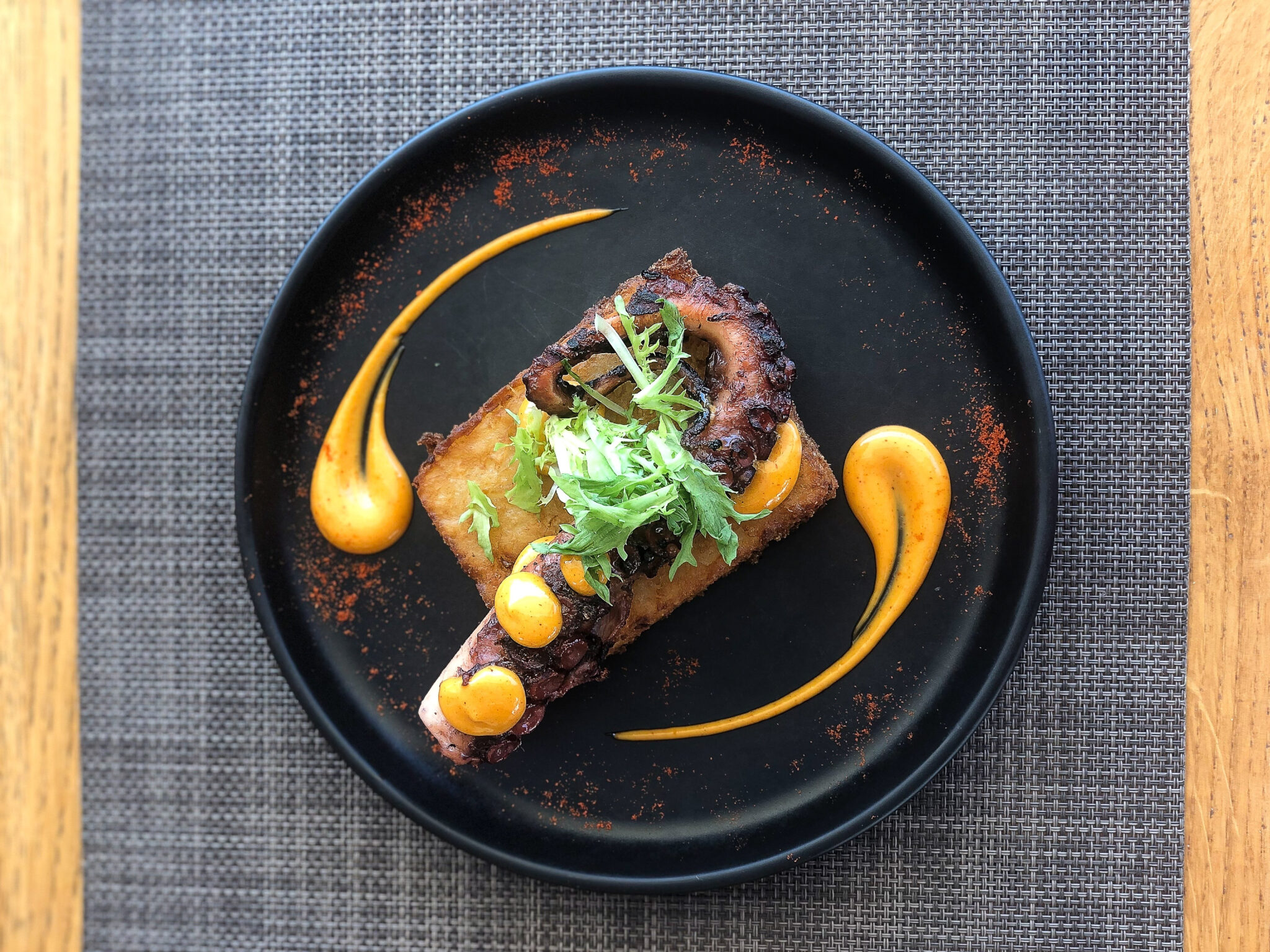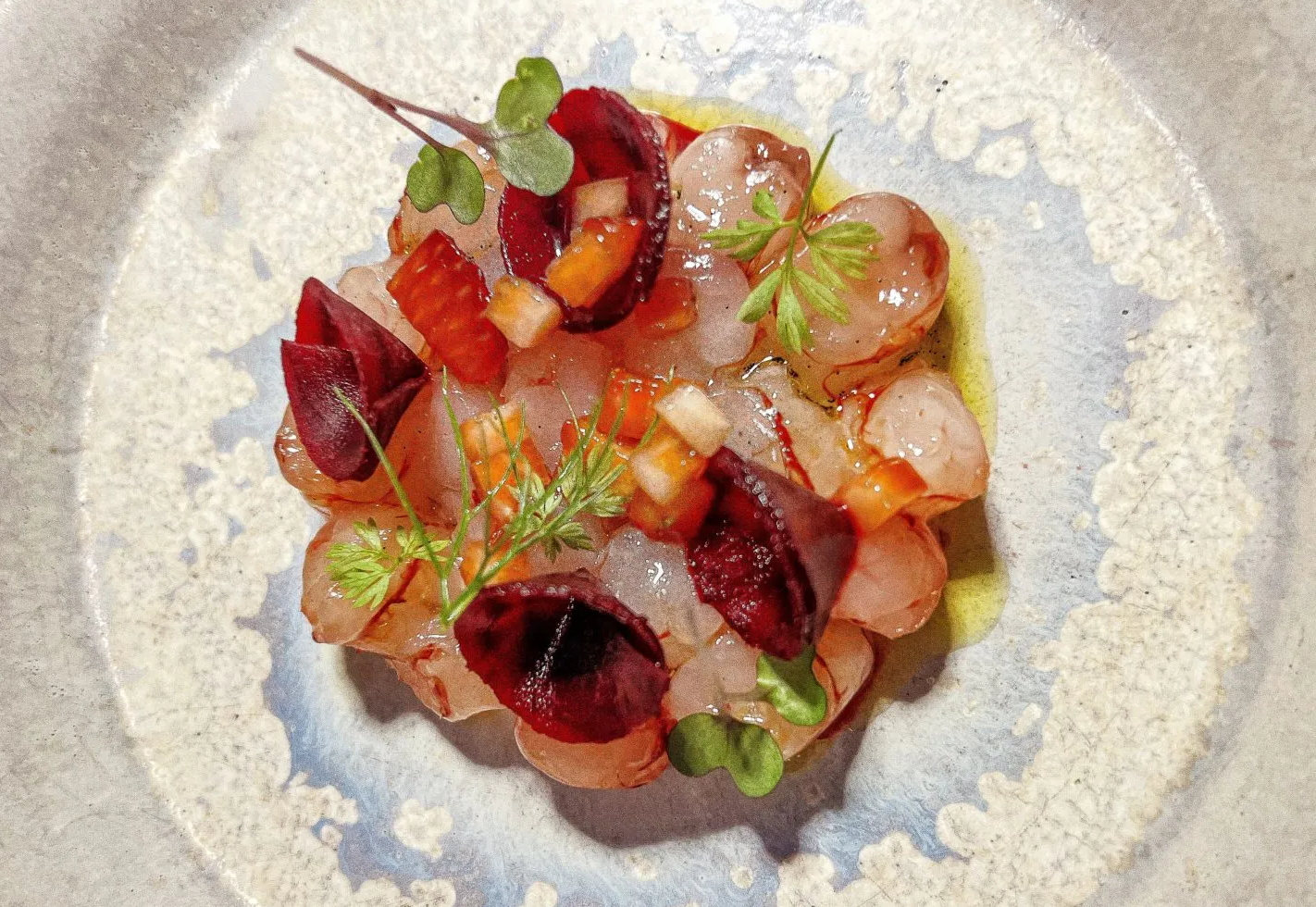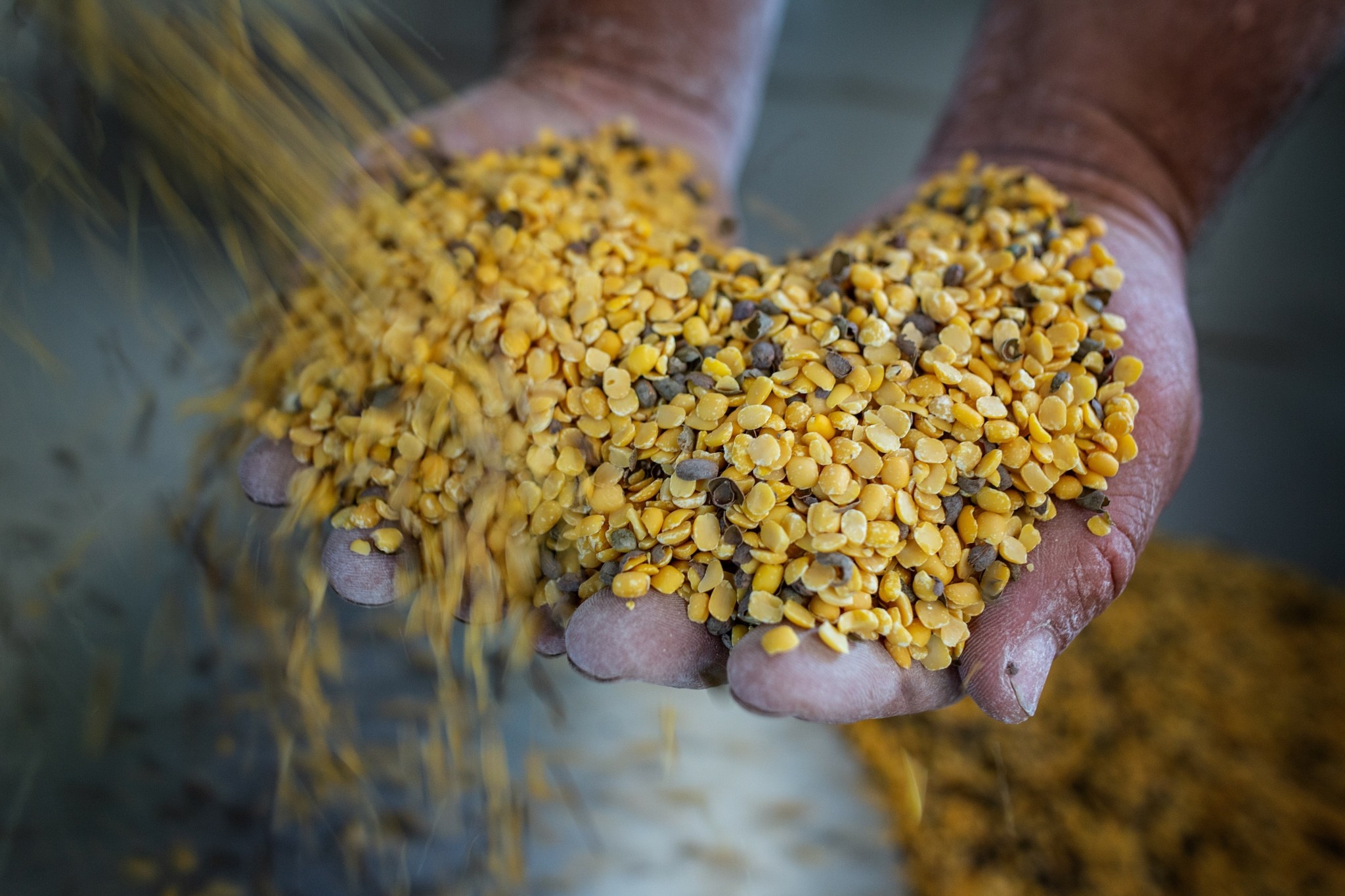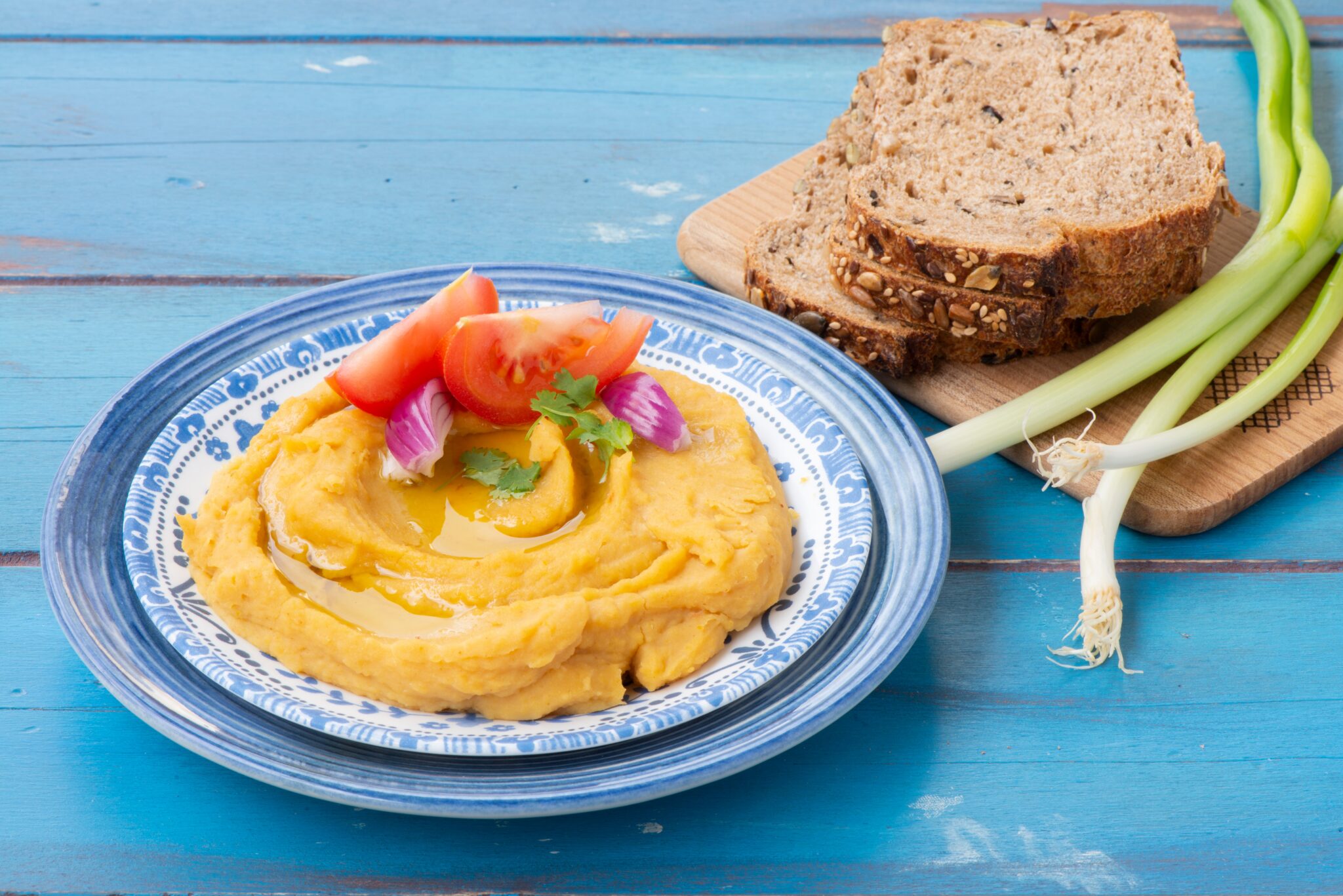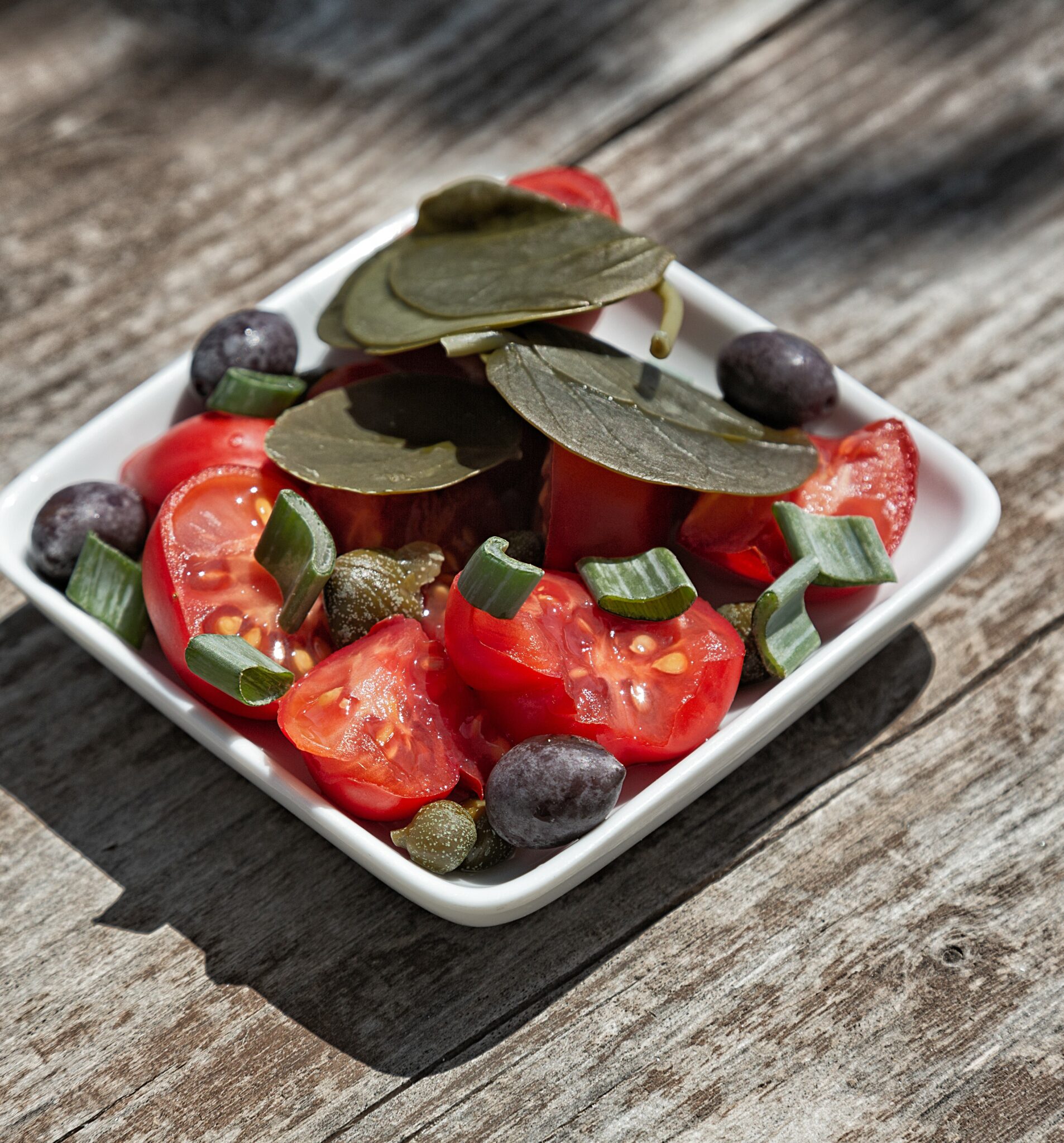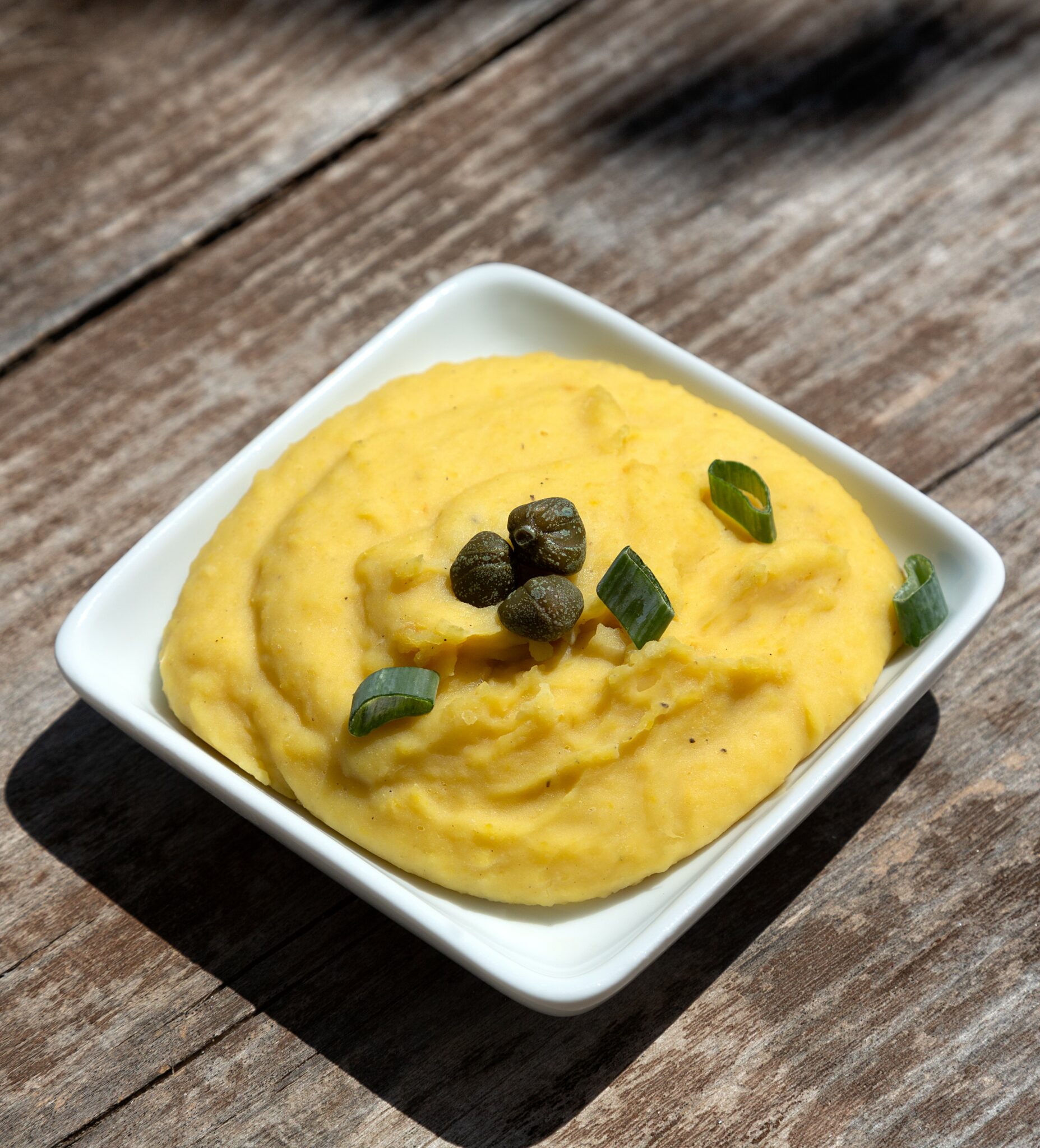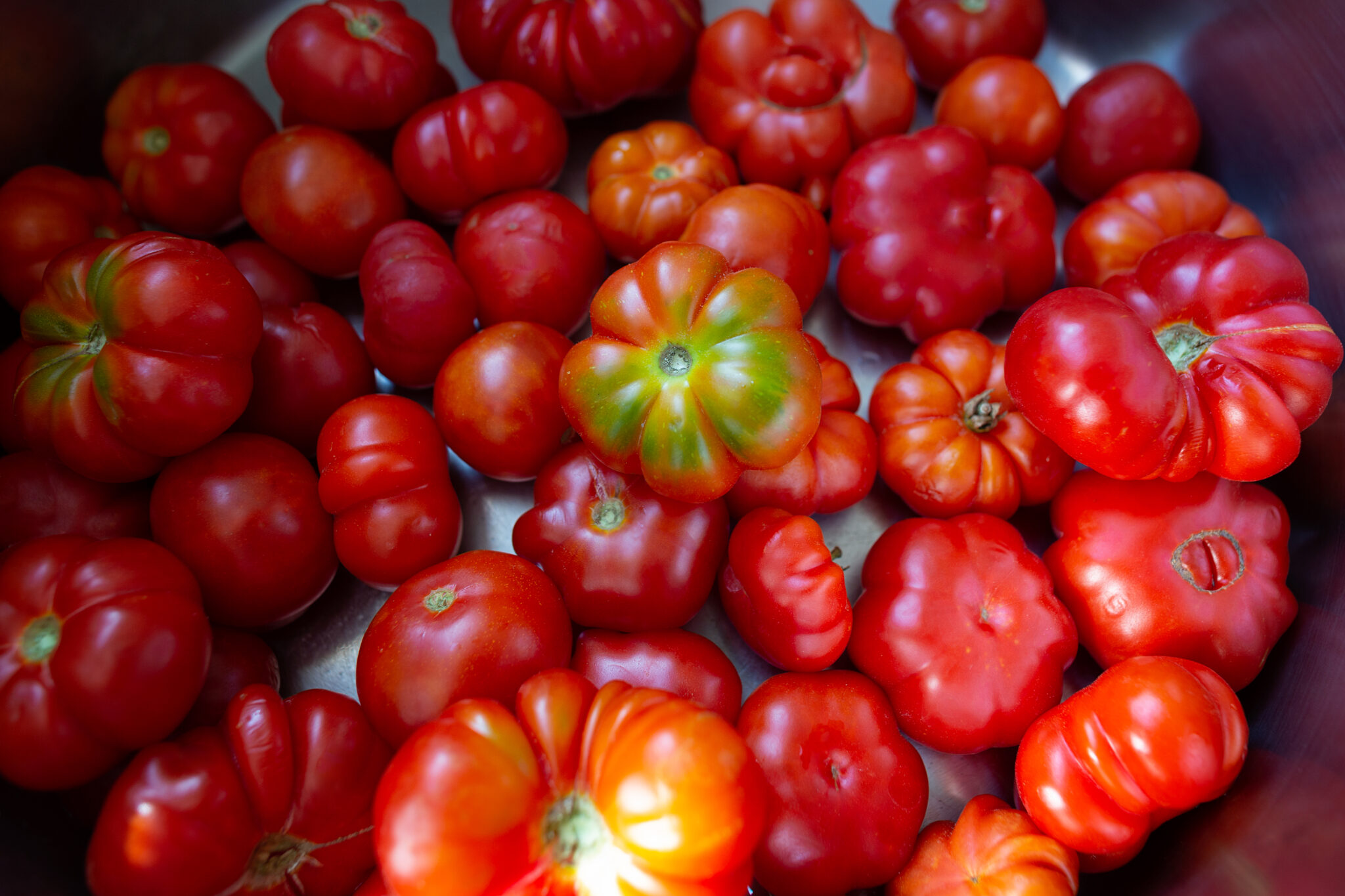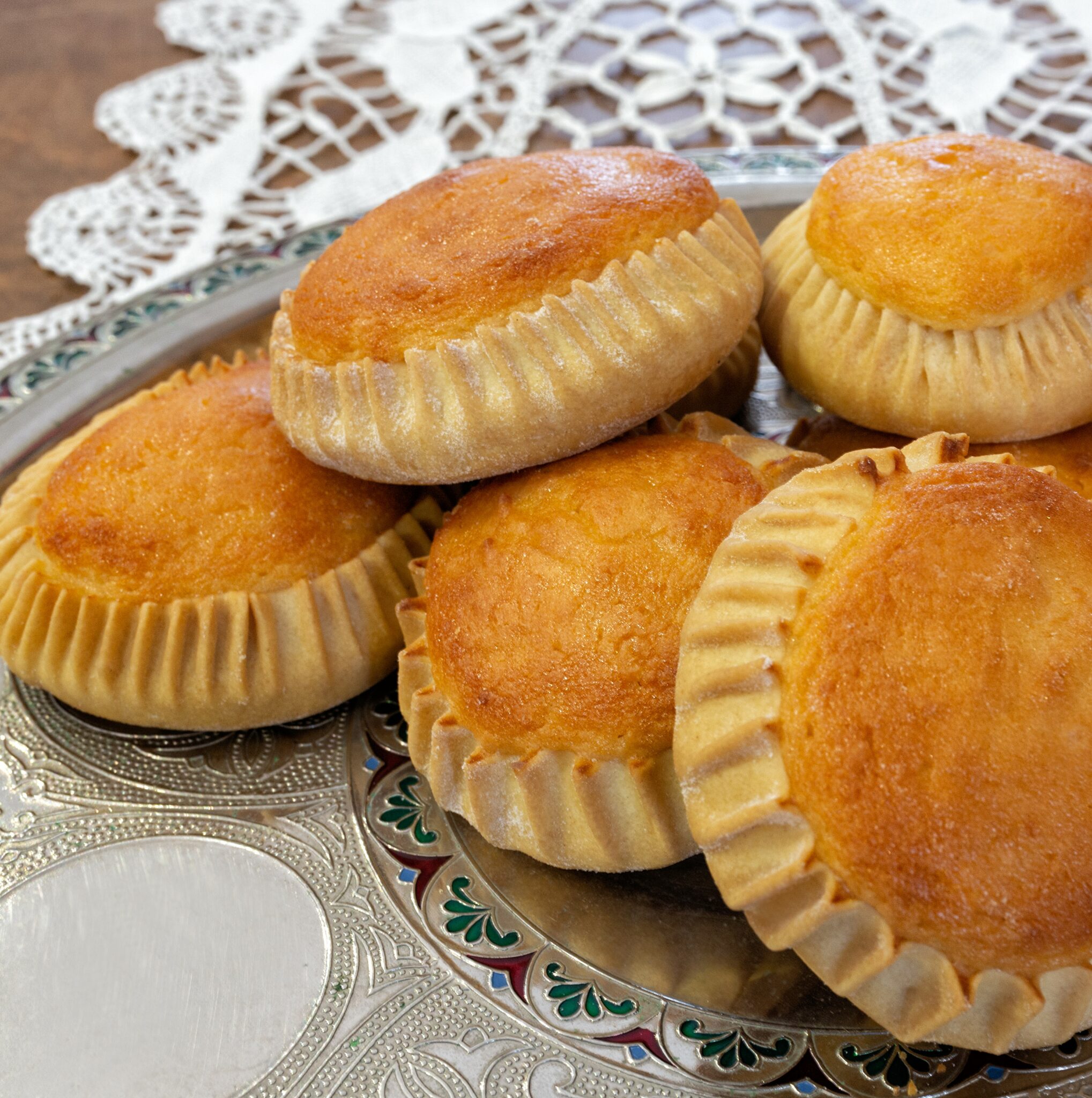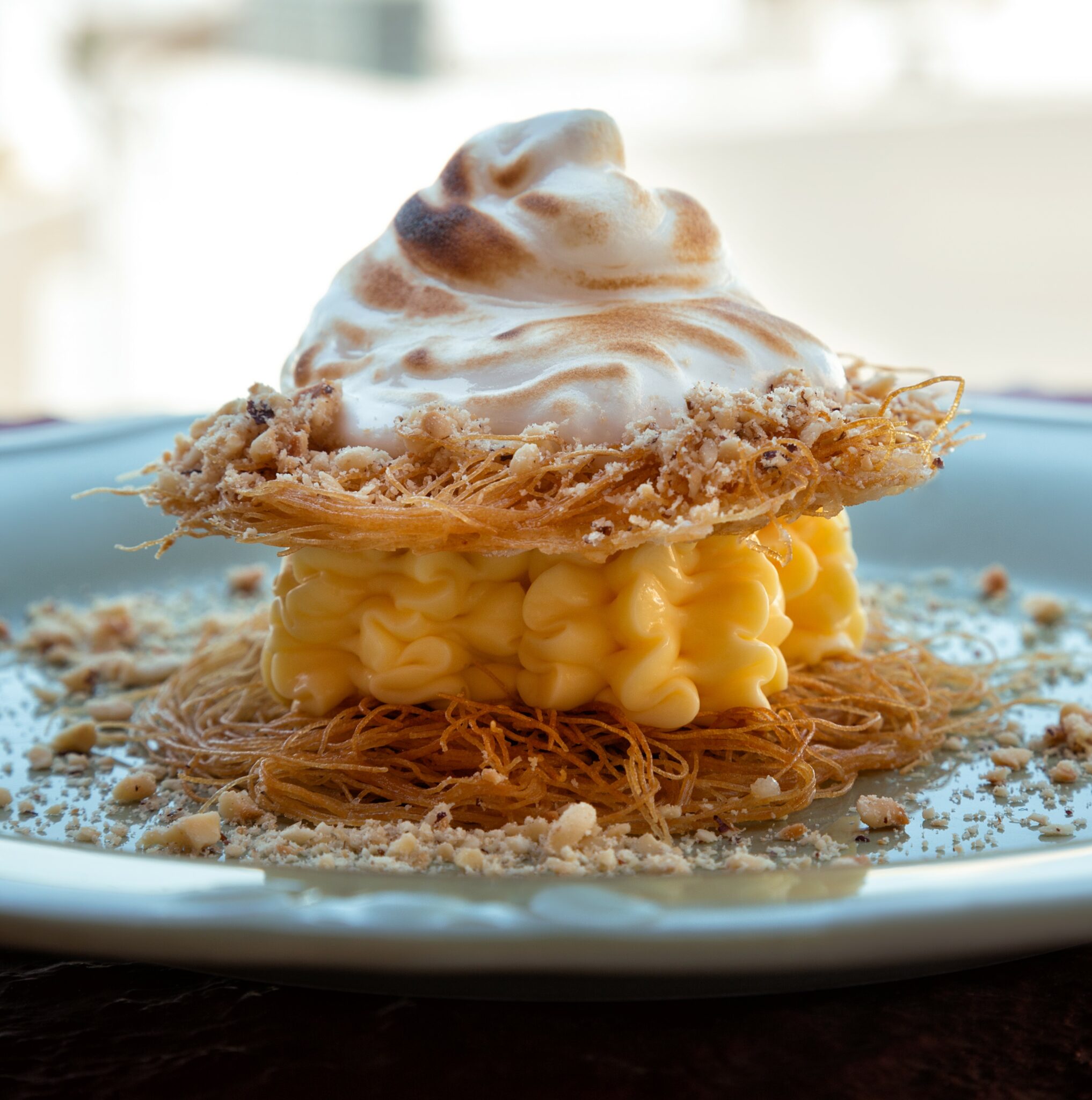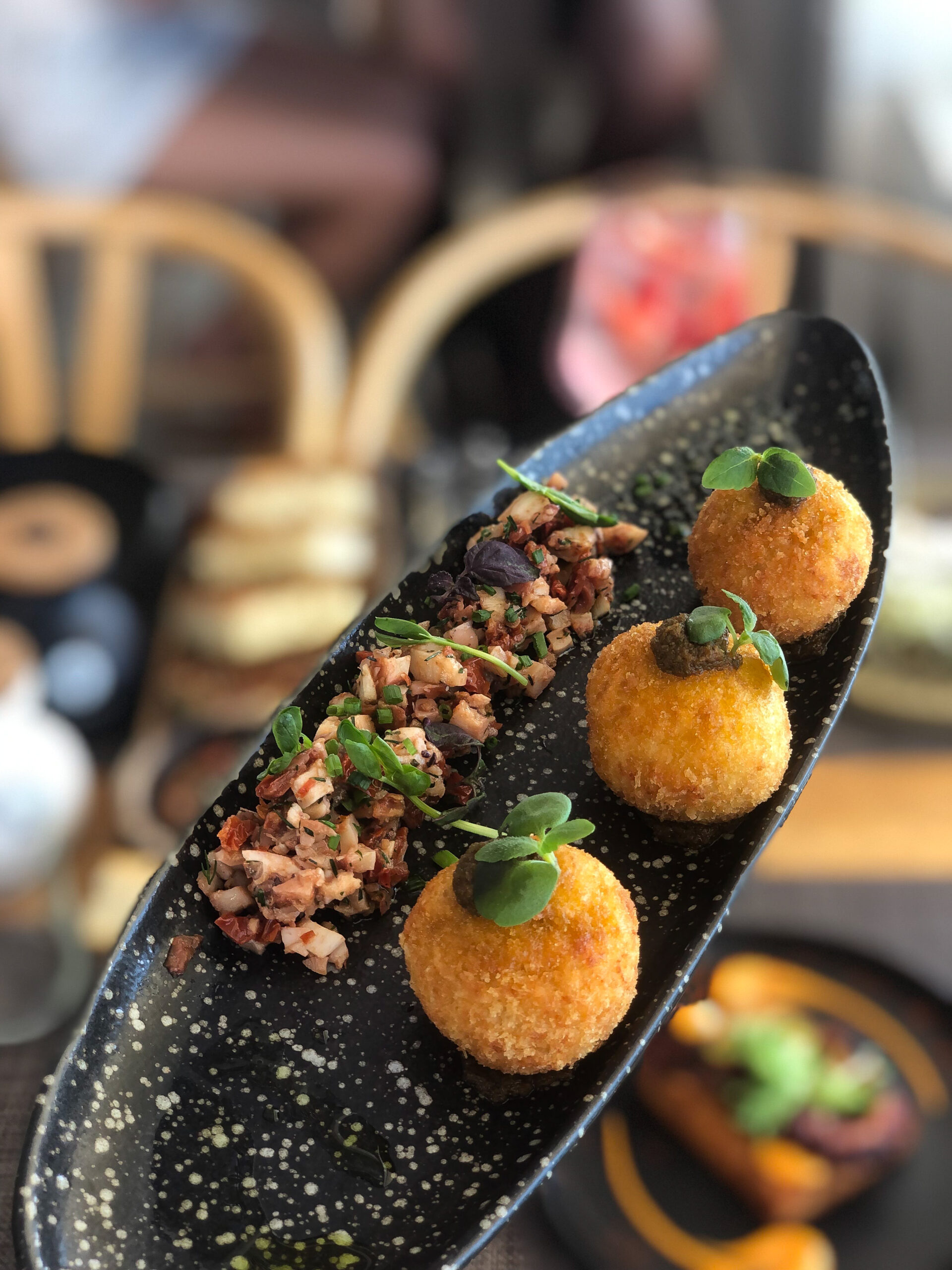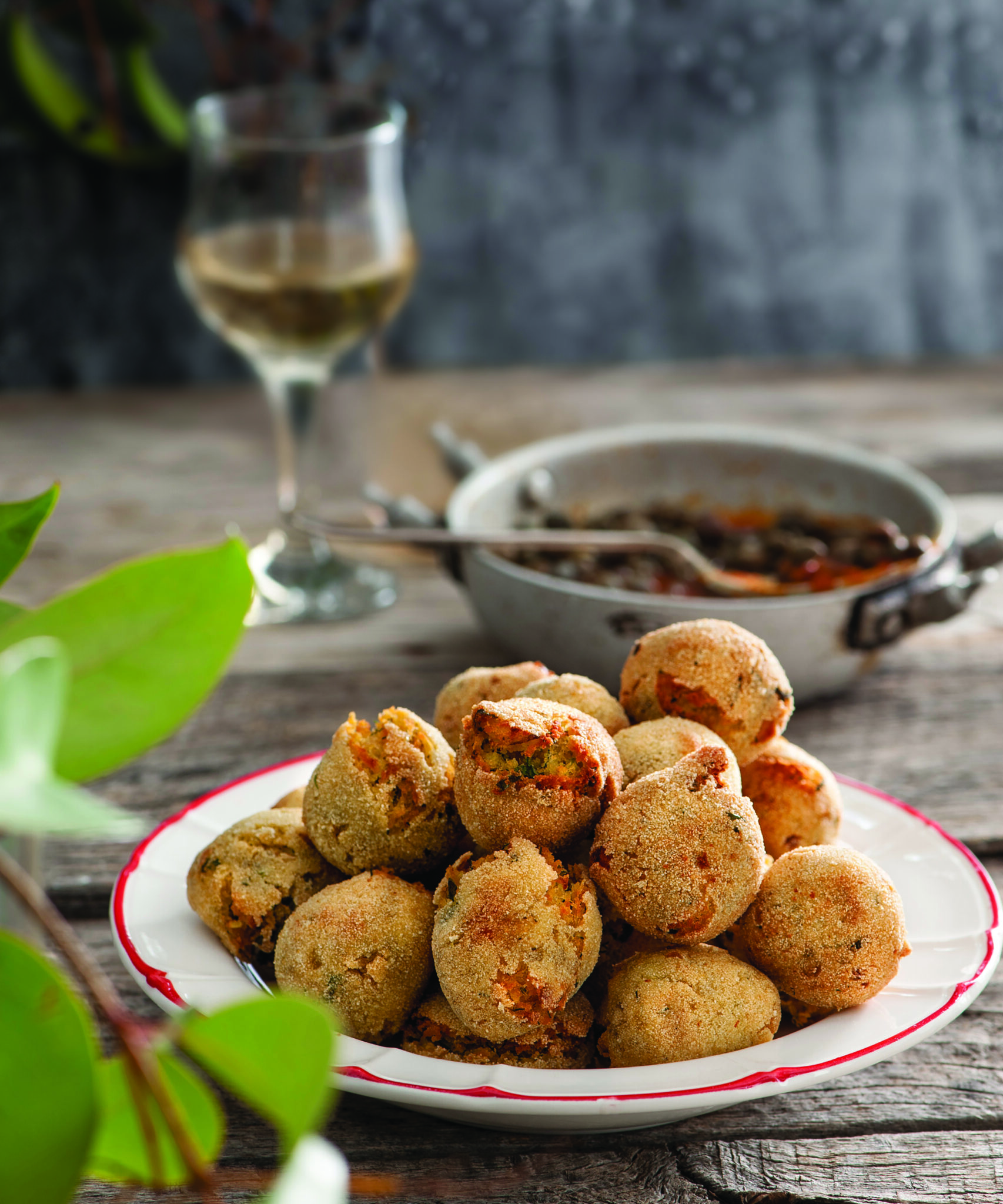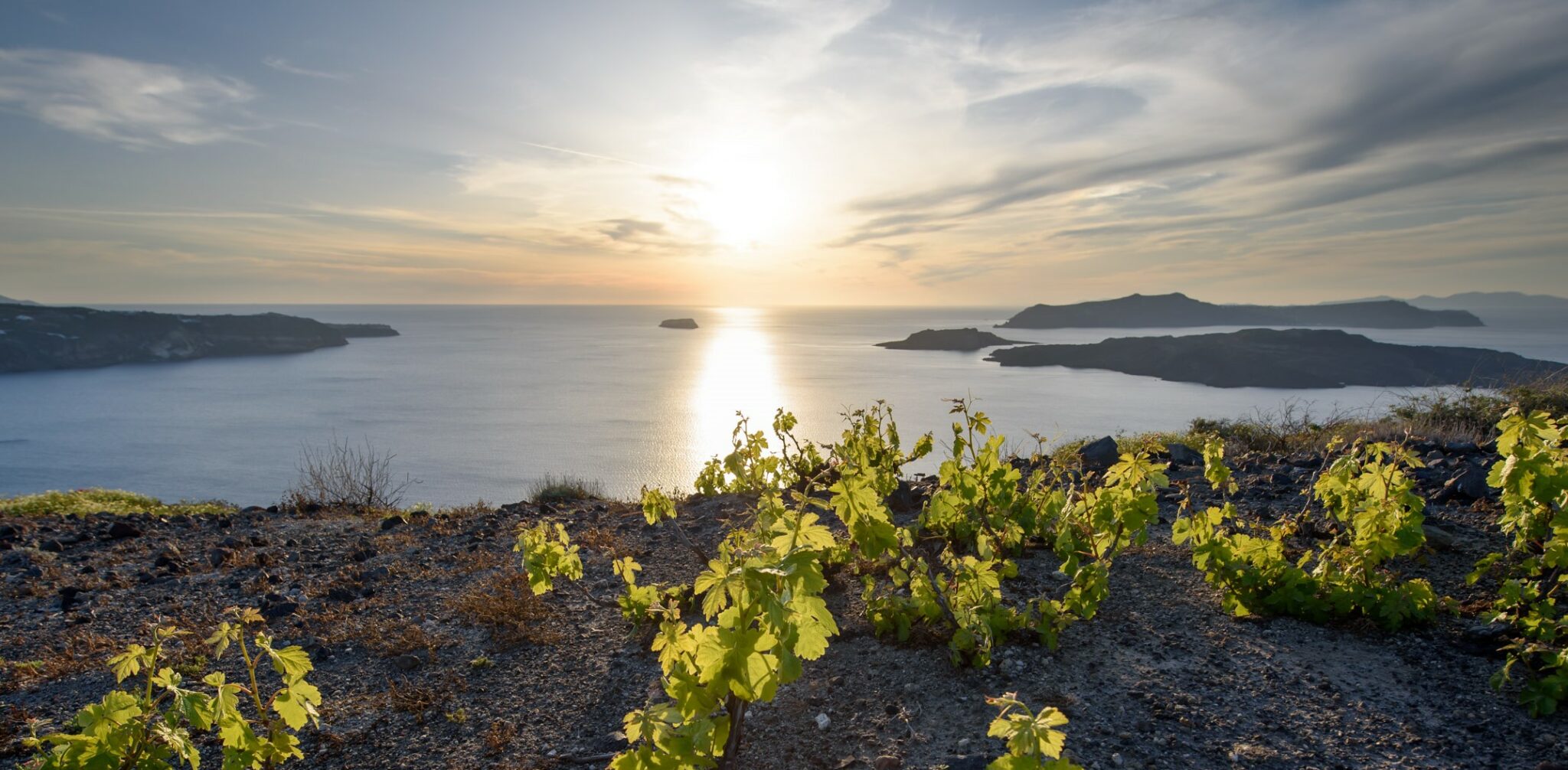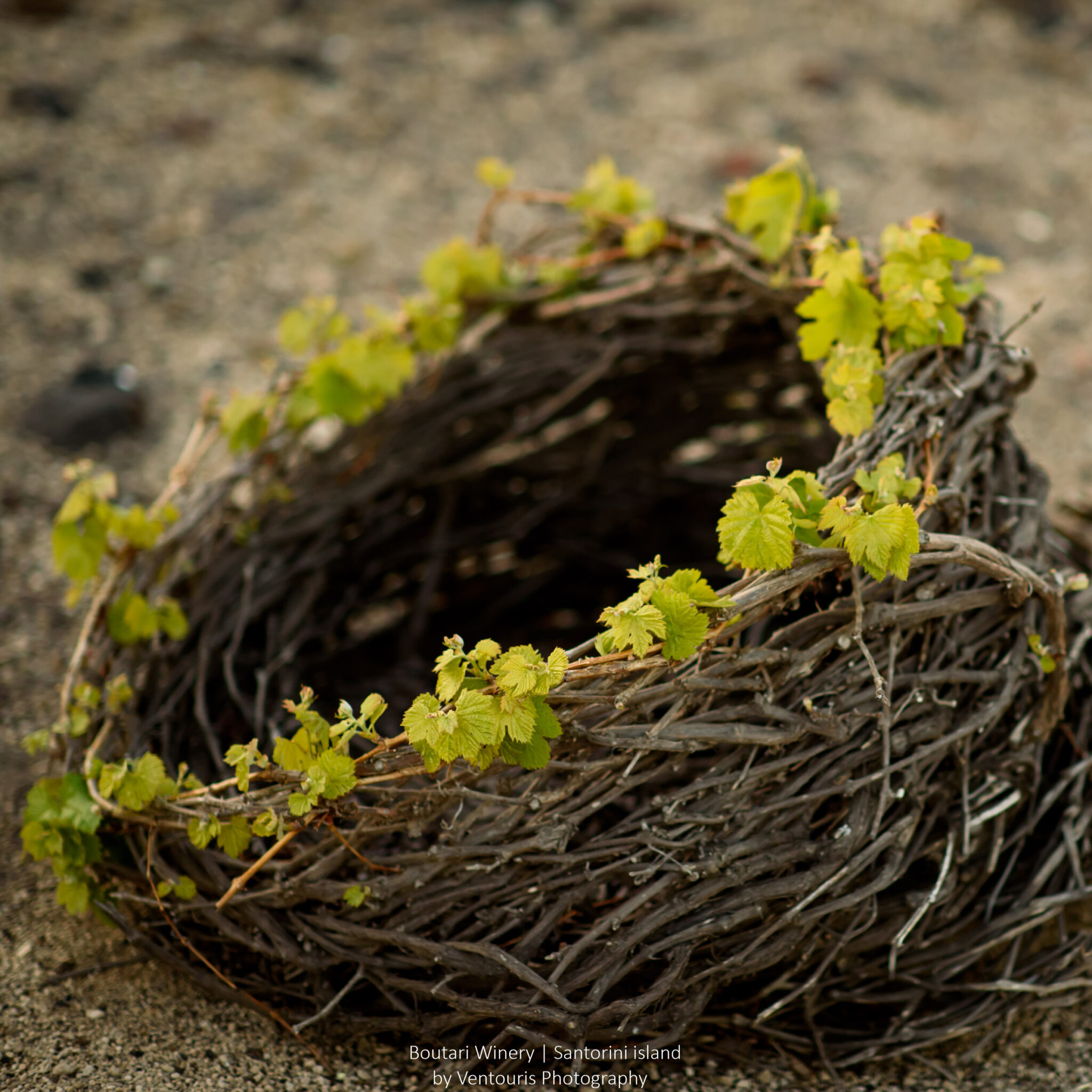Santorini has become a globally recognised destination known chiefly for its creamy traditional fava spread, juicy capers, crispy tomato fritters and unique local award-winning wines that attract foodies and wine enthusiasts from around the world. As one of the most sought-after international destinations, the island has evolved into a world-renowned tourist brand, with a rising culinary scene.
The island’s visitors include affluent and well-known individuals from around the world, and its gastronomy follows suit with high-end restaurants that reflect the latest trends and cosmopolitan, fusion-profile menus. Despite this, the island’s traditional local cuisine, utilizing distinctive local products, continues to inspire the modern culinary scene to some degree and remains alive in some tavernas and certainly in homes.
Santorini’s famous fava (fava beans that are cooked, blended and seasoned), small, humidity-grown tomatoes, white eggplant, barley rusks, olives, and of course the island’s wine, are all products that stand out for their rich taste. The famous Santorini fava (PDO) is the base for a variety of traditional dishes, such as soups, meatballs and fava paired with onions, and has recently started to be systematically cultivated again due to increasing demand from chefs. The Santorini tomato (PDO) with its concentrated flavours and by-products, such as sun-dried tomatoes, is another delicious product. After a peak in cultivation and processing, it was abandoned, but it has recently regained popularity, especially after being recognized as a PDO product in 2013.
Aside from its famous tomato, there are also other unique agricultural products on the island such as white sweet melon with few seeds and the green melon that’s perfect for grilling. There are also round zucchinis, the “katsouni” type of cucumber with few seeds (which in the rest of Greece is called atzouvi or xylagouri) and when not harvested on time it develops into “kaouni”, a small eggplant, and the famous “xerikes patates” (raw potatoes). The morphology of the island is unsuitable for systematic breeding and the few animals that live there are mainly goats and sheep, which do not produce enough milk to be used for dairy production. Nevertheless, at a domestic level, the traditional cheese of Santorini, “hloro” or “hlorotyri” is produced from sheep’s milk and is consumed fresh or preserved in brine.
Capers are and always were a standard element of Santorini’s traditional cuisine. They are seasoned with salt, dried, or made into a paste in vinegar. Relatively unknown is that in Santorini there are many mushrooms, which are mainly eaten grilled. Among the most delicious wild greens are the rare and difficult to find cardamom (elsewhere called “thalassovrouves” or “thalassini roka”, meaning sea rocket), which recently began to be cultivated.
Try the traditional bread and pies made from barley flour, still sold today in bakeries today. All Easter pastries, such as “halakia,” “koulourakia,” “koutsounes” (delicate rolls) and “paximadia of zafora” are flavoured and take on a yellow color from the wild thyme of Karteriat (Crocus cartwrightianus) found in Santorini.
In the Spring, one can find the traditional “zafristi tyropita” pie, made with fresh cheese and scented with zafora and mastic, as well as “feskoulies” which are pastries filled with feskoula (fresh cheese), eggs, dill, and parsley. However, the most famous Easter sweet sold all year round in bakeries is the “melitinia”, open-faced pies similar to the Cretan “kaltsounia”, with a flaky pastry crust and crispy edges filled with a creamy mixture of myzithra or anthotyro cheese, scented with zafora and mastic. They are also made with rice instead of myzithra and called “ryzi” or with a filling of candied almonds and honey called “dourtoulelia”.
In the traditional cuisine of Santorini, you can try a variety of delicious and unique dishes. Some of the most popular and characteristic dishes are:
Fava: a creamy puree made from yellow split peas
Fava panselenos: similar to fava, but made with sautéed onions and leeks
Favokeftedes: fried patties made from fava
Domatokeftedes: fried patties made from tomatoes
“Brantada” bakaliaros: fried cod fish with a sauce made from a mixture of garlic and tomato paste
“Xeloustos” bakaliaros: fried, marinated cod fish in thin strips, served with fresh tomatoes
“Pastos” bakaliaros frikasse: cod fish stew with a sauce made from egg yolk and cheese
Tiganopsomo: fried bread
Sofrito: fried potatoes, zucchini, and tomatoes
Atherinopita: a light, thin pie made from fried onions, leeks, smelt and flour
Gounes: fried small fish
Meze: a selection of different small dishes, often served as appetizers.
Santorini Sweets
Traditionally, the sweets eaten in Santorini are mainly fried and drizzled with honey, while there are also quite a few pastries with almonds: “koufeto”, a festive sweet made from caramelized almonds and honey, “kopania”, balls made from ground barley and finely chopped walnuts wrapped in sesame, “xerotigana”, fried doughnuts, “gries”, a kind of waffle covered with honey, “loukoumades” fried doughnuts, “masourakia”, a pastry leaf filled with sesame, honey and cinnamon that’s dusted with powdered sugar, “raviolia” or rolls of dough filled with myzithra cheese and drizzled with honey, and almond pastries that are baked in the oven. Most of these sweets are sold and eaten to this day. A standout, sophisticated sweet is the creamy “poutiga” made with semolina, almonds, eggs, milk and chocolate and drizzled with a sweet vinsanto wine sauce.
Santorini Wines
The renowned wines of Santorini and the impeccably organized wineries of the island have gained international acclaim, adding further prestige to the island as a world-renowned wine destination. The volcanic soil of the island and its unique microclimate with high aridity and constant strong winds have compelled winemakers to protect the grapevines by giving them the characteristic basket shape, allowing their roots to delve deep into the earth in search of moisture. This is why the island has never been affected by phylloxera. The result is the production of wines with strong minerality, rich aromas, and complex flavour profiles that place them among the top volcanic wines in the world.
The Santorini vineyards (together with those of Therasia) cover an area of 11,000 square meters, with the predominant white variety being Assyrtiko. Other white varieties include Athiri and Aidani (which together with Assyrtiko give the famous sweet wine Vinsanto), Katsano, Potamisi, Platani, Gaidouria and the red varieties of Mavrotrygano and Mandilari. The wine-growing region of Santorini PGI (Protected Geographical Indication) was established in 1971. A distinct category of Santorini PGI dry wines is “Nyktari,” an old and much loved wine among locals, with a mandatory aging period of at least three months in wooden barrels. The island produces 58 PGI dry wines of Santorini (9 of which are Nyktari) and 22 sweet wines (Vinsanto).
The wineries of Santorini are almost all open to visitors, well-organized and many offer guided tours as well as tastings paired with local delicacies or traditional dishes. In all of the island’s restaurants and tavernas, the wines of the Santorini vineyard take a prominent place on the wine list.
Read also:
7 great haute cuisine restaurants in Santorini
5 top Santorini restaurants with modern Greek and ethnic fusion cuisine




